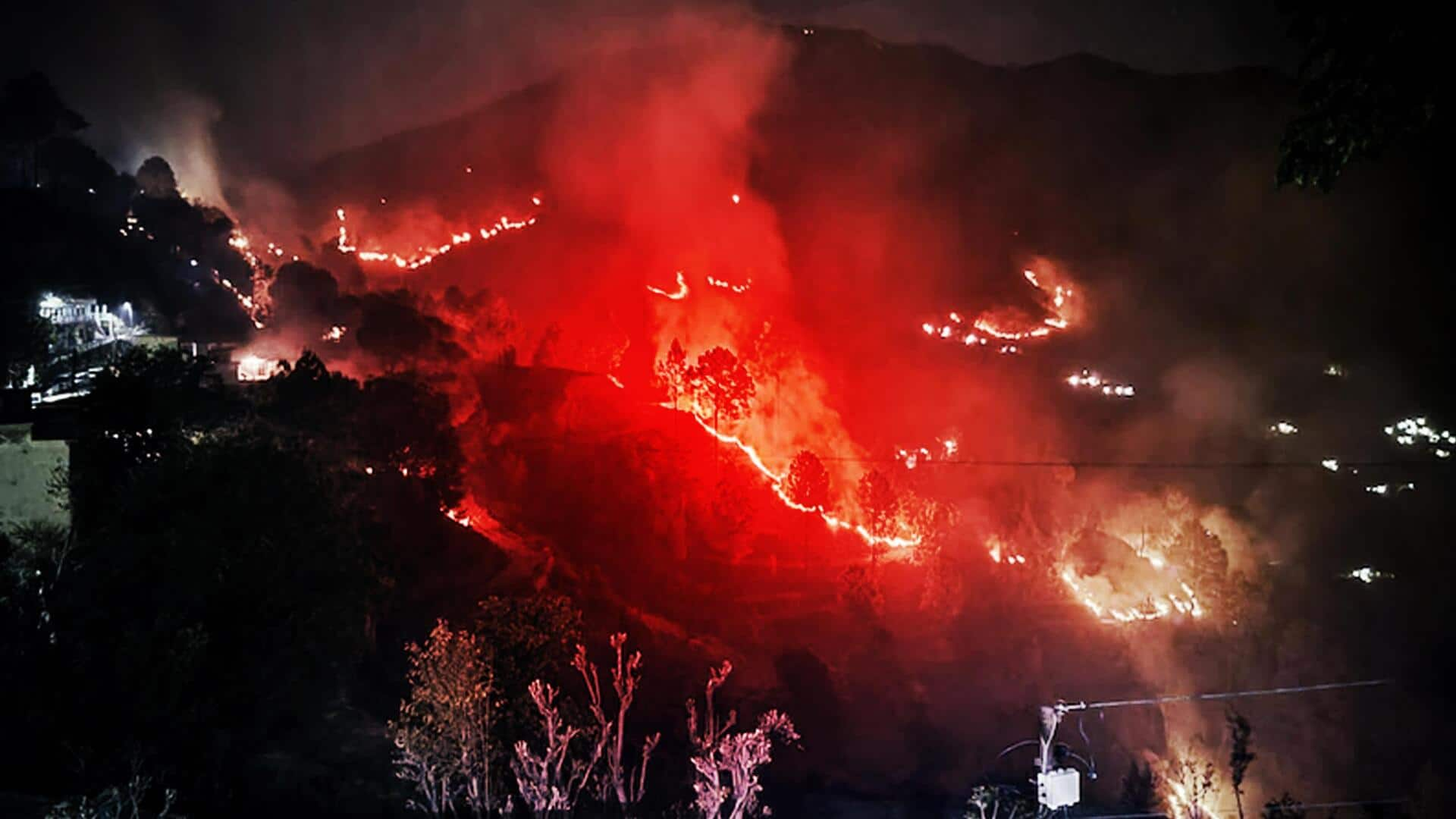
Why Uttarakhand forests are on fire this season
What's the story
The forest fires that began in Uttarakhand in mid-April are still blazing. Over 1,000 hectares of forests have been affected, although the total number of deaths is yet to be estimated. This season's forest fires were, however, not limited to Uttarakhand. Odisha, Chhattisgarh, Madhya Pradesh, Karnataka, and Jharkhand also reported forest fires. But the number of forest fires these states reported was significantly lower than that of Uttarakhand, which reported 325. Here, we try to understand what is causing them.
Causes
Human activities and natural phenomena fuel fires
The increasing frequency of forest fires in Uttarakhand is due to a combination of natural phenomena and human activities. In Uttarakhand, the forests are predominantly populated by highly flammable Chir Pine trees, making them susceptible to fires. Furthermore, lengthy dry spells in the Himalayas, combined with variables such as excess biomass, have contributed significantly to this occurrence. Also making the matter worse are human activities, such as burning forest floors to promote growth and clearing land for agriculture.
More reasons
Multiple people booked for intentionally starting fires
A report from the Forest Research Institute reveals that human activities are responsible for 95% of forest fires. Human actions, such as burning lit bidis or starting bonfires in close proximity to forested regions, exacerbate the problem. In recent weeks, multiple people in Uttarakhand have been booked for intentionally starting fires, for reasons ranging from those described above to creating content for social media or simply participating in mischief.
Measures
Government actions and investigations amidst forest fires
So far, authorities have registered 351 cases related to "man-made" forest fires, identifying 59 individuals along with 290 unidentified suspects. Since November 1, 2023, Uttarakhand has recorded a total of 575 forest fire incidents, affecting 689.89 hectares of forest area and costing the state exchequer over ₹14 lakh. The state heavily depends on tourism as a major source of income, which is also at risk due to the recurrent forest fires.